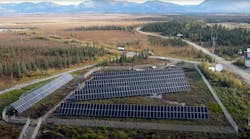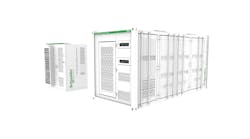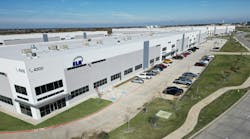A growing number of communities are initiating microgrid projects according to Mike Bakas, executive vice president of Ameresco. Bakas recently sat down with Elisa Wood, editor-in-chief of Microgrid Knowledge, to discuss why.
“I think resiliency has garnered a tremendous amount of attention over the last few years due the impact of climate change,” Bakas said. He pointed to the destruction we’ve seen of late from severe weather events as a wake-up call for everyone.
As grid service disruptions become increasingly common, communities are increasingly concerned with preserving the safety of their citizens. According to Bakas, microgrids can do just that by giving communities the ability to provide core services, even during outages.
But first, energy efficiency
Bakas explained that Ameresco’s microgrid solution is not one-size-fits-all; it can be customized so that each community’s particular needs are served. The company can also leverage its energy efficiency and renewable energy generation expertise to create a project that’s sustainable, according to Bakas.
“The beauty of energy efficiency is that it reduces the consumption needs of the community,” Bakas said. That, in turn, benefits the community both environmentally and financially.
Putting energy efficiency measures in place “should be really the first move” of any microgrid project, Bakas said.
Overcoming community microgrid roadblocks
So, what’s stopping more communities from adopting microgrids? “Regulatory rule constraints as well as capital funding [issues] have created unnecessary obstructions in trying to develop community microgrids,” Bakas said.
To help communities overcome capital constraints, Bakas said that Ameresco’s solution can be provided with no upfront capital requirements.
“We're willing to fund the capital to implement these projects,” Bakas said, but the rule constraints will require a lot of work involving utilities, regulatory agencies and many other key stakeholders.
He added that creating new rules is taking too long. “As I've said many times, these destructive weather patterns are not waiting for us to get our act together.”
A pathway to net zero
Microgrids can offer communities a pathway to net zero, but, Bakas said, most communities will need to partner with experts to make significant progress on that goal.
Bakas offered the McKinleyville microgrid project as an example. Located on the Pacific coast in Northern California, the integrated microgrid incorporates existing generation along with new solar and battery energy storage systems at the community’s wastewater treatment plant.
“The project creates a pathway for the facility to reach net zero emissions while being prepared to withstand potential utility outages in the future,” Bakas said.
“Communities need to be able to rely on a partner to be able to collaborate and create a sustainable path to resilience,” Bakas continued, adding that he believes this type of partnership is the future of the microgrid market.
Track news on community microgrids. Subscribe to the free Microgrid Knowledge Newsletter.








